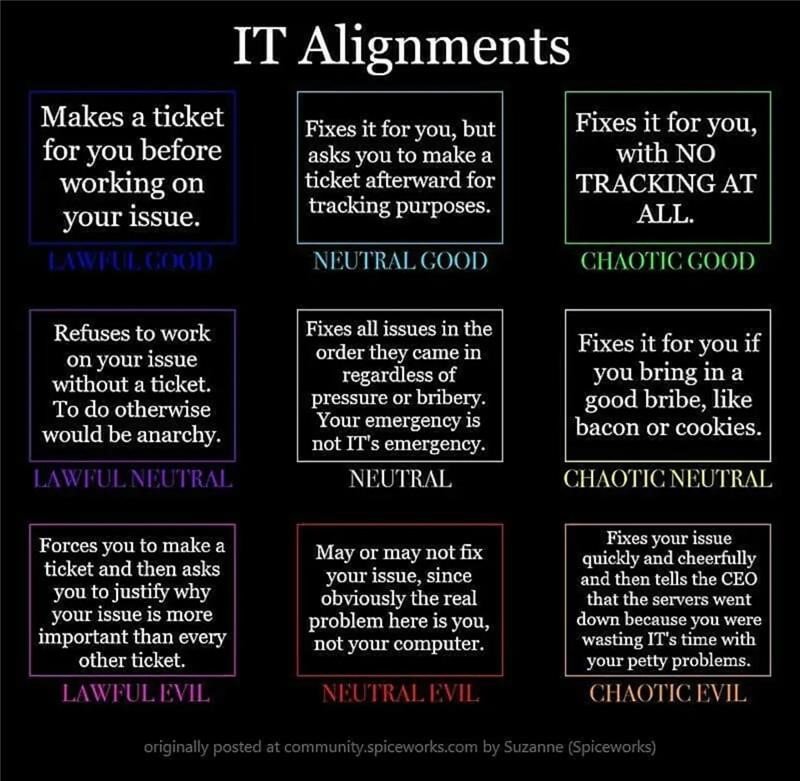It’s a foundational aspect of character creation and development in the game.

In Dungeons & Dragons, alignment is a system that categorizes characters, creatures, and NPCs based on their ethical (good, evil, or neutral) and moral (lawful, chaotic, or neutral) perspectives. It’s a two-axis system that helps define a character’s general worldview and behavior. Here’s a brief overview of the alignment categories:
Lawful Good: Characters who are committed to upholding the law and doing what is right, following a strict moral code.
Neutral Good: Characters guided by their sense of morality and desire to do good, but not necessarily bound by laws Chaotic Good: Characters who value personal freedom and aim to do good, often acting spontaneously and sometimes against laws if they deem it necessary for the greater good
Lawful Neutral: Individuals who follow law and order strictly, whether it’s for good or ill, valuing structure and organization.
True Neutral: Characters who prefer to keep a balance, not specifically leaning towards good, evil, law, or chaos.
Chaotic Neutral: Characters who follow their whims, holding their freedom above all els
Lawful Evil: Characters who use law and order to benefit themselves, often manipulating the system for their own gain.
Neutral Evil: Characters who do whatever they can get away with, without compassion or qualms.
Chaotic Evil: Characters who are out for themselves, respecting no authority and following no rules but their own
This system is not only a role-playing tool but also can influence game mechanics, such as how certain spells or items interact with characters of different alignments. It’s a foundational aspect of character creation and development in the game.





